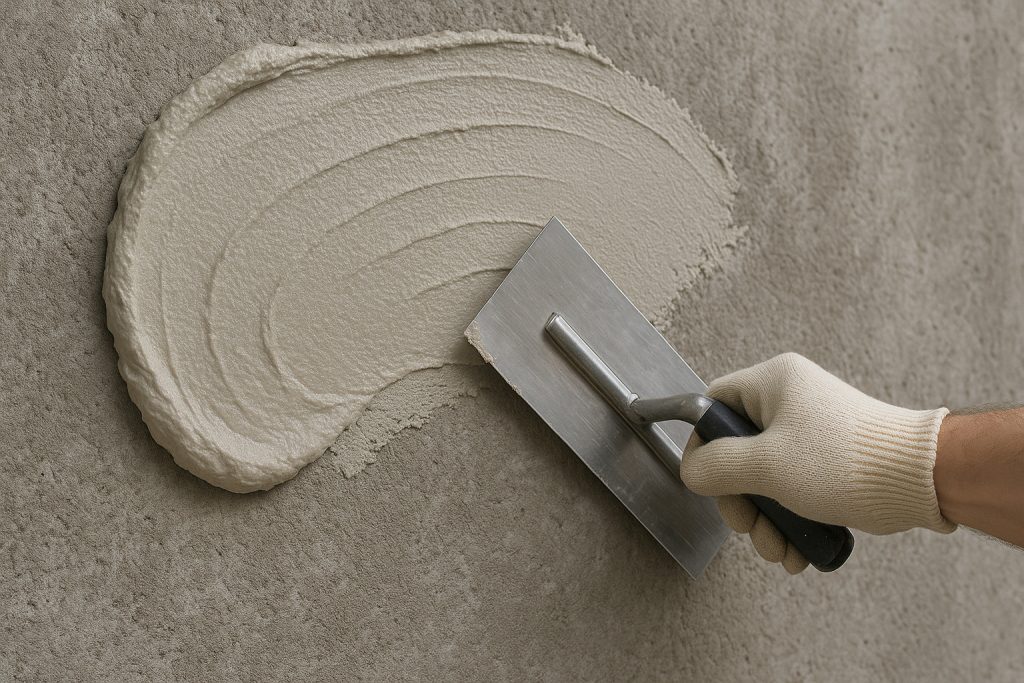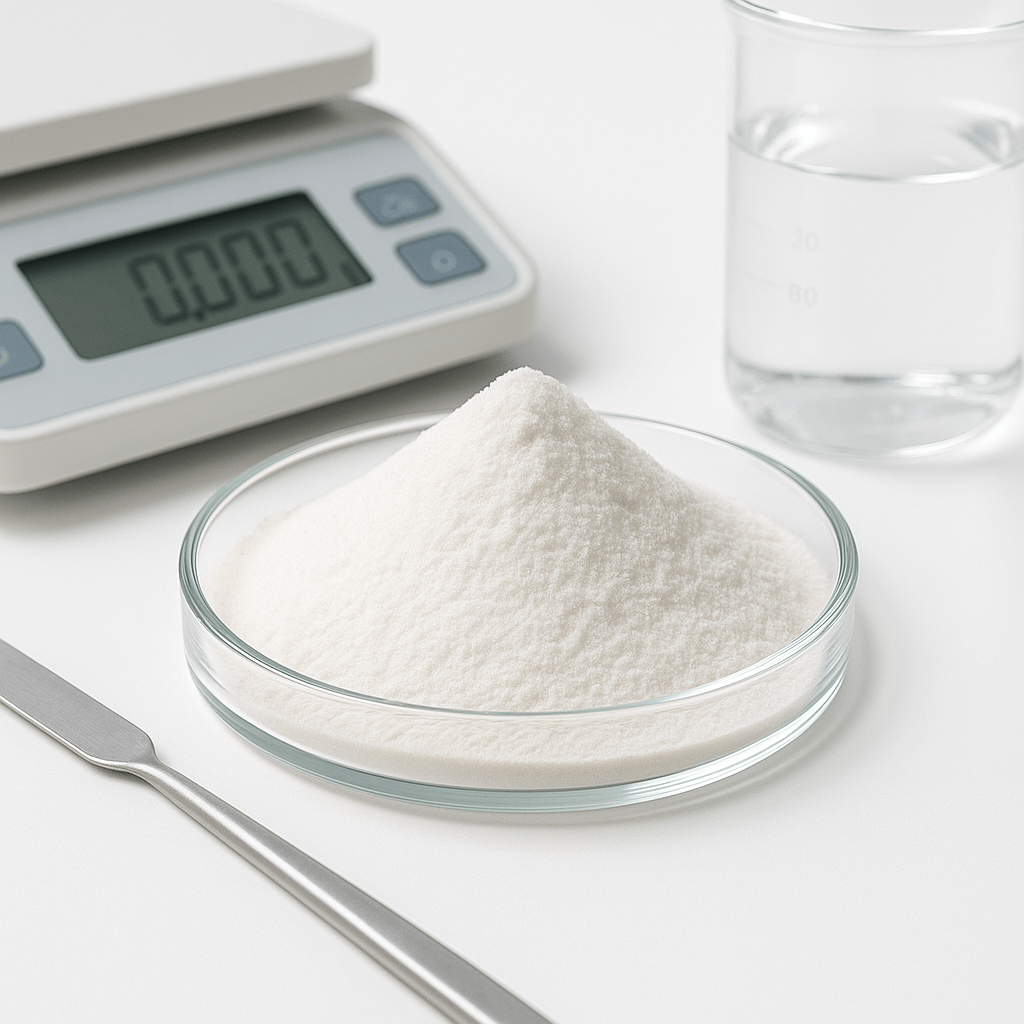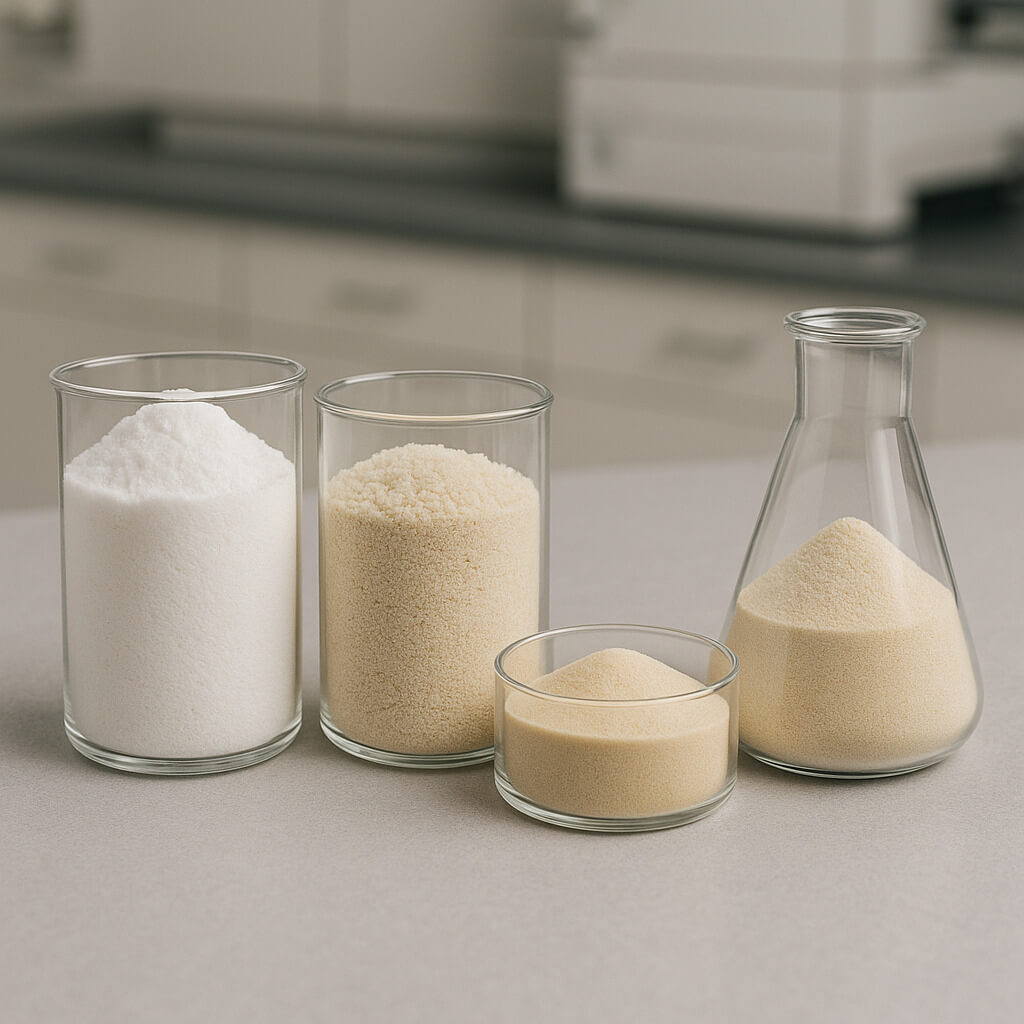Hydroxypropyl methylcellulose (HPMC) stands as one of the most versatile binding agents in modern manufacturing. This remarkable polymer creates strong bonds in countless products across industries, from pharmaceuticals to construction materials. For purchasing managers and technical decision-makers, understanding how HPMC functions as a binder can lead to significant improvements in product quality and manufacturing efficiency. This article explores the binding mechanisms of HPMC, its applications across various industries, and practical considerations for optimizing its use in your manufacturing processes.

1. What Is HPMC And Why Is It Used As A Binder?
HPMC, or hydroxypropyl methylcellulose, is a semi-synthetic, inert polymer derived from cellulose. Its chemical structure features a cellulose backbone modified with hydroxypropyl and methyl groups, creating a compound with exceptional binding properties. Вот что делает его особенным: HPMC forms a strong matrix when mixed with other ingredients, creating cohesive bonds that maintain structural integrity in various products.
The molecular structure of HPMC gives it unique characteristics that make it an ideal binder. It forms hydrogen bonds with adjacent particles, creating strong adhesive forces. Additionally, its high molecular weight contributes to excellent film-forming properties, which enhance binding strength in many applications.
| Key Properties of HPMC as a Binder | Benefits in Manufacturing |
|---|---|
| Excellent film-forming ability | Creates strong, uniform bonds |
| Растворимость в воде | Easy incorporation into water-based formulations |
| Термическое гелеобразование | Temperature-responsive binding properties |
| pH stability | Consistent performance across various pH environments |
| Non-ionic nature | Compatible with many ingredients |
HPMC outperforms many traditional binders in several ways. Unlike starch-based binders, HPMC maintains stability across a wider temperature range. Compared to synthetic polymer binders like polyvinyl alcohol (PVA), HPMC offers better biodegradability while maintaining comparable binding strength.
Manufacturing professionals choose HPMC as a binder for several compelling reasons. Its consistent performance, broad compatibility with other ingredients, and ability to function effectively at relatively low concentrations make it cost-effective. Суть в следующем: HPMC delivers reliable binding performance while offering formulation flexibility that many alternative binders cannot match.
2. How Does HPMC Create Strong Binding Properties In Different Applications?
The binding mechanism of HPMC relies on its unique molecular structure and behavior in various environments. When incorporated into a formulation, HPMC molecules disperse and hydrate, creating a network of polymer chains that entangle with other components. What you need to know is: this entanglement creates physical bonds that hold particles together, forming a cohesive matrix.
HPMC’s binding strength comes from its ability to form both hydrogen bonds and mechanical interlocking between particles. The hydroxyl groups in the HPMC structure readily form hydrogen bonds with polar substrates, while the polymer chains physically entangle with surrounding materials, creating a dual binding mechanism.
Temperature plays a crucial role in HPMC’s binding behavior. One of its most valuable properties is thermal gelation—HPMC solutions remain fluid at room temperature but form strong gels when heated above their gelation temperature (typically 70-90°C). This property allows manufacturers to control binding activation during processing.
| Диапазон температур | HPMC Binding Behavior |
|---|---|
| Below 50°C | Hydration and dissolution, initial binding formation |
| 50-70°С | Increased viscosity, strengthening of bonds |
| 70-90°С | Thermal gelation, maximum binding strength |
| Above 90°C | Stable gel structure, maintained binding integrity |
Moisture content significantly impacts HPMC’s binding performance. In low-moisture environments, HPMC forms stronger, more brittle bonds. As moisture increases, the bonds become more flexible but may decrease in overall strength. Manufacturers must carefully control moisture levels to achieve optimal binding results.
Testing binding strength typically involves measuring tensile strength, shear resistance, and adhesion properties. For example, in pharmaceutical tablet manufacturing, disintegration and dissolution tests help evaluate how well HPMC binds active ingredients while allowing for proper drug release. Construction applications often use pull-off adhesion tests to measure binding strength in mortars and adhesives.
3. What Are The Primary Industries That Benefit From HPMC As A Binder?
The pharmaceutical industry represents one of the largest users of HPMC as a binding agent. Вы будете удивлены, узнав, that HPMC serves as the primary binder in approximately 40% of tablet formulations worldwide. In tablet manufacturing, HPMC binds active pharmaceutical ingredients (APIs) and excipients together, ensuring uniform distribution and controlled release profiles. It creates tablets with consistent hardness, friability, and dissolution characteristics—critical factors for drug efficacy and safety.
| Промышленность | HPMC Binding Applications | Основные преимущества |
|---|---|---|
| Фармацевтика | Tablet formulation, capsule manufacturing | Controlled release, stability, biocompatibility |
| Строительство | Tile adhesives, mortars, renders, grouts | Water retention, workability, adhesion strength |
| Пищевые продукты | Baked goods, meat products, plant-based foods | Texture improvement, moisture retention, stability |
| Личная гигиена | Creams, lotions, cosmetics | Emulsion stability, texture enhancement, film formation |
| Textiles | Fabric sizing, printing pastes | Fiber adhesion, print definition, fabric strength |
In the construction industry, HPMC functions as a critical binder in tile adhesives, mortars, and grouts. It improves water retention, workability, and adhesion strength. For example, when added to cement-based tile adhesives at just 0.3-0.5% concentration, HPMC can increase adhesion strength by up to 30% while extending open time—the period during which tiles can be placed and adjusted.
Food manufacturers utilize HPMC as a binder in various products, including baked goods, meat alternatives, and processed foods. In plant-based meat substitutes, HPMC binds plant proteins and other ingredients, creating textures that mimic animal products. The FDA and European Food Safety Authority (EFSA) have approved HPMC (E464) as a safe food additive, making it suitable for food applications worldwide.
Personal care and cosmetic products benefit from HPMC’s binding properties in formulations like creams, lotions, and makeup. It helps bind oils and water phases together while providing stability and improved texture. HPMC’s film-forming ability makes it particularly valuable in long-wear cosmetic products.
Emerging applications include 3D printing, where HPMC serves as a binder in powder-based printing processes, and sustainable packaging, where it helps create biodegradable alternatives to plastic films. These innovative uses demonstrate HPMC’s continuing relevance in developing manufacturing technologies.
4. What Technical Considerations Matter When Using HPMC As A Binder?
Selecting the appropriate HPMC grade is crucial for optimal binding performance. Вот правда: using the wrong viscosity grade can lead to manufacturing problems and product failures. HPMC is available in various viscosity grades, typically ranging from 5 to 100,000 mPa·s (measured in 2% solution at 20°C). Higher viscosity grades generally provide stronger binding but may be more difficult to process.
| Класс вязкости ГПМЦ | Типичные применения | Вопросы обработки |
|---|---|---|
| Низкий (5-50 мПа·с) | Spray coating, liquid formulations | Easy to process, weaker binding strength |
| Medium (50-4,000 mPa·s) | Tablet binding, construction adhesives | Good balance of processability and binding strength |
| Высокая (4000-15000 мПа·с) | High-strength adhesives, specialty applications | Stronger binding, more challenging to process |
| Ultra-high (>15,000 mPa·s) | Specialty construction products | Strongest binding, requires specialized equipment |
Concentration requirements vary significantly by application. In pharmaceutical tablets, HPMC typically comprises 2-5% of the formulation. Construction adhesives may contain 0.2-0.5% HPMC, while food applications generally use 0.1-1%. Finding the optimal concentration involves balancing binding strength with other factors like processability and cost.
Processing conditions significantly impact HPMC’s binding performance. Temperature, mixing time, shear forces, and hydration methods all affect how well HPMC functions as a binder. For example, proper hydration is essential—HPMC should be dispersed in cold water before heating to prevent lumping and ensure uniform binding throughout the product.
Compatibility with other ingredients must be carefully evaluated. While HPMC is generally compatible with many materials due to its non-ionic nature, certain substances can interfere with its binding mechanism. High concentrations of electrolytes, extreme pH conditions, and some surfactants may reduce HPMC’s binding effectiveness.
Common binding issues include insufficient hydration, improper mixing, and incompatibility with other ingredients. Troubleshooting typically involves adjusting processing parameters, changing HPMC grades, or modifying formulations. For instance, if binding strength is inadequate, manufacturers might increase HPMC concentration, switch to a higher viscosity grade, or improve the hydration process.
5. What Are The Economic And Performance Benefits Of HPMC In Binding Applications?
When comparing costs with alternative binders, HPMC often presents a compelling value proposition. The remarkable fact is that while HPMC may have a higher per-kilogram cost than some alternatives like starches or certain synthetic polymers, its high efficiency means less material is needed to achieve equivalent binding results. This efficiency can lead to overall cost savings in formulations.
| Binder Type | Relative Cost | Efficiency | Overall Value |
|---|---|---|---|
| ГПМЦ | Средний-Высокий | Очень высокий | Отличный |
| Starch | Низкий | Середина | Хороший |
| ПВА | Середина | Высокий | Хороший |
| Гуаровая камедь | Середина | Средний-Высокий | Хороший |
| Synthetic Acrylics | Высокий | Высокий | Середина |
Production efficiency improvements represent another significant economic benefit. HPMC’s consistent performance and broad processing window reduce manufacturing variability and reject rates. For example, in pharmaceutical tablet production, using HPMC as a binder can reduce tablet weight variation by up to 50% compared to starch-based binders, resulting in fewer rejected batches and higher production yields.
Product quality enhancements directly impact customer satisfaction and market position. HPMC-bound products typically demonstrate superior consistency, appearance, and performance characteristics. In construction adhesives, HPMC binding leads to better open time, reduced sagging, and improved adhesion—qualities that contractors and end-users value highly.
Shelf-life extension represents another valuable benefit. HPMC’s stability across various environmental conditions helps products maintain their integrity during storage and transportation. For instance, pharmaceutical tablets bound with HPMC typically show less degradation over time compared to those using more moisture-sensitive binders.
Environmental considerations increasingly influence binding agent selection. HPMC offers several sustainability advantages: it’s derived from renewable resources (wood pulp), biodegradable, and typically requires less energy-intensive processing than many synthetic alternatives. These characteristics align with growing corporate sustainability initiatives and regulatory trends toward greener manufacturing.
6. How Should Manufacturers Optimize HPMC Usage In Their Binding Applications?
Proper incorporation and mixing techniques significantly impact HPMC’s binding performance. Вам нужно понять, что the hydration process is critical—HPMC should be dispersed in cold water before heating to prevent agglomeration. For dry blending applications, HPMC should be thoroughly mixed with other dry ingredients before adding liquids to ensure uniform distribution.
| Лучшая практика | Implementation Method | Выгода |
|---|---|---|
| Cold water dispersion | Add HPMC to cold water with high-shear mixing | Prevents lumping, ensures complete hydration |
| Dry pre-blending | Mix HPMC with other dry ingredients before liquid addition | Improves distribution uniformity |
| Controlled hydration time | Allow sufficient time for complete HPMC hydration | Maximizes binding strength |
| Optimized mixing parameters | Adjust mixing speed, time, and equipment based on formulation | Ensures consistent binding throughout product |
| Sequential addition | Add ingredients in specific order based on formulation | Prevents incompatibility issues |
Storage and handling recommendations help maintain HPMC’s binding properties. The material should be stored in cool, dry conditions, as exposure to high humidity can cause premature hydration and reduced effectiveness. Once a container is opened, it should be tightly resealed to prevent moisture absorption. Most manufacturers recommend using HPMC within two years of production, though properly stored material often remains effective longer.
Quality control measures ensure consistent binding results. Regular testing of viscosity, substitution degree, moisture content, and particle size helps identify potential issues before they affect production. In-process testing during manufacturing—such as rheological measurements in liquid systems or compression force monitoring in tablet production—provides real-time feedback on binding performance.
Customization strategies allow manufacturers to optimize HPMC for specific requirements. This might involve blending different HPMC grades, combining HPMC with complementary binders, or modifying processing parameters. For example, a pharmaceutical manufacturer might blend high and medium viscosity HPMC grades to achieve the perfect balance of binding strength and dissolution profile for a particular drug formulation.
A case study from the construction industry demonstrates successful implementation: A major tile adhesive manufacturer switched from a combination of cellulose ethers to a specialized HPMC grade. The change resulted in 15% stronger adhesion, 30% longer open time, and a 7% reduction in raw material costs. The manufacturer also reported fewer customer complaints and increased market share following the reformulation.
Заключение
HPMC’s exceptional binding properties make it an invaluable component in manufacturing across multiple industries. From pharmaceutical tablets to construction adhesives, HPMC creates strong, reliable bonds while offering formulation flexibility and processing advantages. By understanding the technical aspects of HPMC binding and implementing best practices, manufacturers can achieve significant improvements in product quality, production efficiency, and cost-effectiveness. Morton’s specialized HPMC grades provide tailored solutions for specific binding challenges, helping you optimize your manufacturing processes. Partner with Morton’s technical team to identify the ideal HPMC binding solution for your specific application and experience the difference that expert formulation support can make in your production outcomes.
Раздел часто задаваемых вопросов
Q1: Is HPMC safe for use in food and pharmaceutical products as a binder?
Yes, HPMC is generally recognized as safe (GRAS) by the FDA and approved as food additive E464 in Europe. It has undergone extensive toxicological testing and shows no significant adverse effects when used as directed. In pharmaceuticals, it’s classified as a Generally Regarded As Safe (GRAS) excipient with a long history of safe use. However, manufacturers must ensure they source pharmaceutical or food-grade HPMC that meets appropriate regulatory standards for these applications.
Q2: How does temperature affect HPMC’s binding properties during manufacturing?
Temperature significantly influences HPMC’s binding behavior through its unique thermal gelation properties. At lower temperatures (below 50°C), HPMC hydrates and dissolves, beginning the binding process. As temperatures rise to 70-90°C, HPMC undergoes thermal gelation, forming a strong gel network that maximizes binding strength. This temperature-responsive behavior allows manufacturers to control when and how binding occurs during processing. However, extreme temperatures (above 200°C) for prolonged periods may cause degradation and reduced binding effectiveness.
Q3: What is the difference between HPMC and other cellulose derivatives when used as binders?
HPMC offers several advantages over other cellulose derivatives. Compared to methylcellulose (MC), HPMC provides better moisture resistance and flexibility in films. Unlike carboxymethylcellulose (CMC), HPMC is non-ionic, making it more stable across various pH levels and compatible with a wider range of ingredients. Hydroxyethylcellulose (HEC) typically forms weaker bonds than HPMC and lacks thermal gelation properties. HPMC also generally offers better binding efficiency than cellulose ethers with different substitution patterns, requiring lower concentrations to achieve equivalent binding strength.
Q4: Can HPMC be combined with other binding agents for enhanced performance?
Yes, HPMC works synergistically with many other binding agents. Common combinations include HPMC with polyvinyl alcohol for improved film flexibility, HPMC with starches for cost optimization while maintaining performance, and HPMC with guar gum for enhanced water retention in construction applications. These combinations often allow manufacturers to achieve specific performance characteristics that neither binder could provide alone. When creating such combinations, compatibility testing is essential, as some binding agents may interfere with HPMC’s functionality or cause phase separation in certain formulations.
Q5: What are the most common mistakes when using HPMC as a binder in manufacturing?
The most frequent errors include insufficient hydration time, which prevents HPMC from developing full binding potential; improper dispersion techniques leading to lumps and inconsistent binding; using incorrect viscosity grades for specific applications; failing to account for temperature effects during processing; and overlooking potential incompatibilities with other ingredients. Another common mistake is storing HPMC improperly, allowing it to absorb moisture before use. To avoid these issues, manufacturers should follow supplier recommendations for specific grades, conduct small-scale trials before full production, and implement robust quality control procedures.




